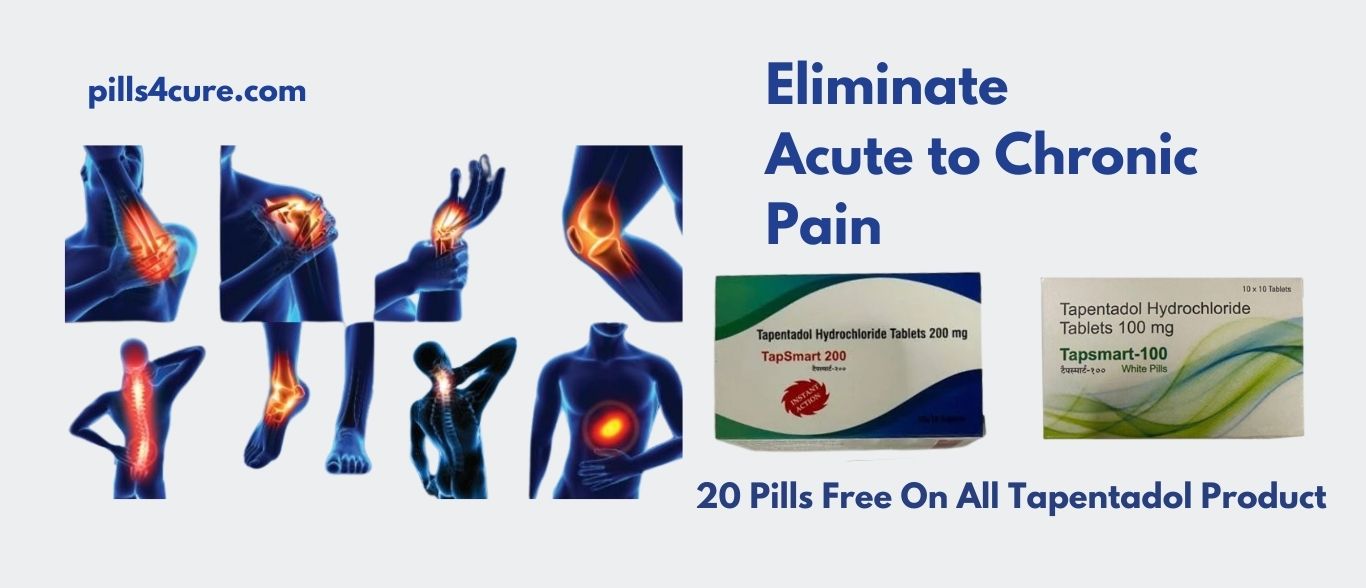Tapentadol, sold under the brand names Tapsmart 100 and Tapsmart 200, is a powerful analgesic that has gained popularity for its effectiveness in treating a variety of pains, including muscle pain. This article examines tapentadol’s pharmacological processes, efficacy in treating muscular pain, and function in pain management.
Understanding tapentadol:
Tapentadol is a centrally acting analgesic that has two modes of action. It functions as both a mu-opioid receptor agonist and a norepinephrine reuptake inhibitor. This novel combination enables tapentadol to offer excellent pain relief while limiting the adverse effects associated with typical opioid medicines.
Mechanism of action:
Mu-opioid Receptor Agonism:
Tapentadol binds to mu-opioid receptors in the central nervous system, causing analgesic effects. The activation of these receptors limits the transmission of pain signals, lowering pain perception.
Tapentadol, unlike typical opioids, has a lower affinity for the mu-opioid receptor, which helps to lessen the danger of tolerance and dependency.
Norepinephrine reuptake inhibition:
Tapentadol suppresses the reuptake of norepinephrine, a neurotransmitter that modulates pain pathways. Tapentadol increases the presence of norepinephrine in the synaptic cleft, which helps modulate pain transmission and perception.
Efficacy for Muscle Pain Management:
Tapentadol has been shown in clinical tests to be effective in treating muscular pain caused by a variety of disorders, including
Musculoskeletal disorders:
Tapsmart 100 and Tapsmart 200 have been demonstrated to effectively relieve musculoskeletal pain, including muscular strains, sprains, and inflammatory disorders like arthritis.
Tapentadol’s dual mode of action makes it highly useful for treating both nociceptive and neuropathic musculoskeletal pain.
Post-operative Pain:
Patients frequently have severe muscular pain after surgery as a result of tissue stress and inflammation. Tapentadol has been shown to be beneficial in treating postoperative pain, allowing for improved pain management and recuperation.
Chronic pain syndromes:
Fibromyalgia and chronic lower back pain are both characterized by persistent muscular discomfort. Tapentadol, with its dual pharmacological action, is an effective therapy choice for people suffering from these chronic illnesses.
Comparative efficacy:
Tapentadol has a positive effectiveness profile, according to studies comparing it to various analgesics, including typical opioids and non-opioid medicines. Tapsmart 100 and Tapsmart 200mg provide equivalent or greater pain relief to opioids such as oxycodone and hydrocodone, with less side effects such diarrhea and respiratory depression.
Safety profile:
While tapentadol has some of the same side effects as typical opioids, such as nausea, constipation, and dizziness, its unique pharmacological profile minimizes the incidence of respiratory depression and drowsiness. Furthermore, tapentadol has a reduced risk of misuse and dependency than typical opioids, making it a safer choice for long-term pain treatment.
Dosage & Administration:
Tapsmart 100mg and Tapsmart 200 are available in extended-release formulations, which allow for easy once- or twice-daily dosage. The dose should be adjusted according to the patient’s pain intensity, medical history, and response to treatment. It is critical to adhere to prescribed guidelines and constantly monitor patients for side effects, particularly when starting medication or altering dose.
Conclusion:
Tapentadol, also known as Tapsmart 100 and Tapsmart 200, is an appealing therapy choice for those suffering from muscular pain. Its dual mode of action, which combines mu-opioid receptor antagonism and norepinephrine reuptake inhibition, provides excellent pain relief while reducing the risk of side effects associated with typical opioids. Tapentadol, with its shown effectiveness in a variety of pain disorders and excellent safety profile, is a significant tool in the treatment of muscular pain and other chronic pain syndromes.
